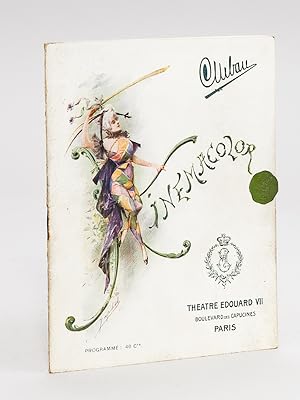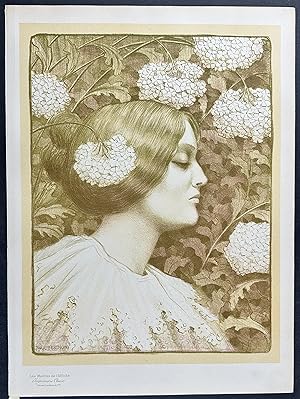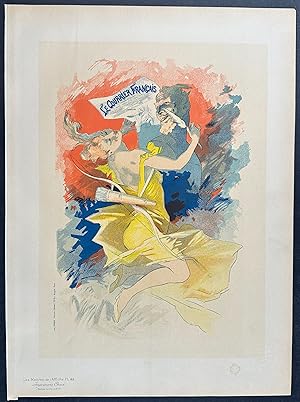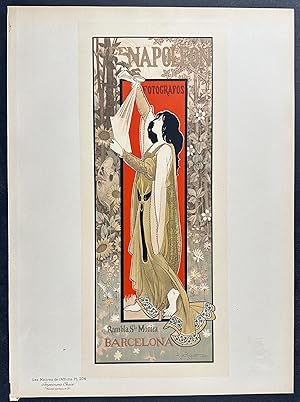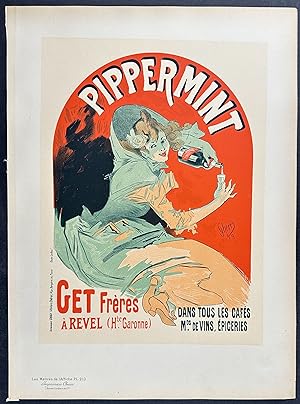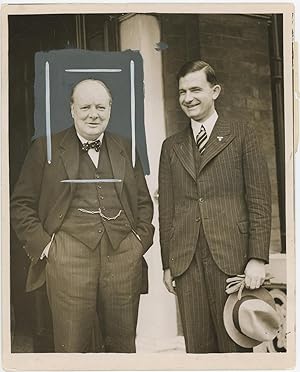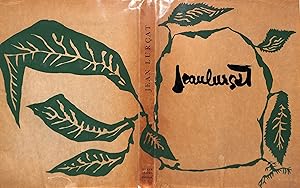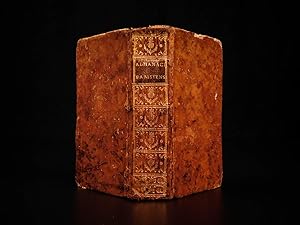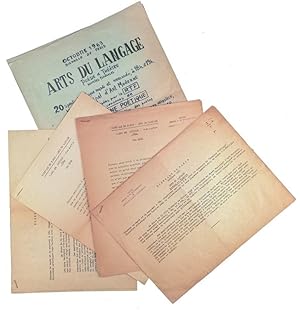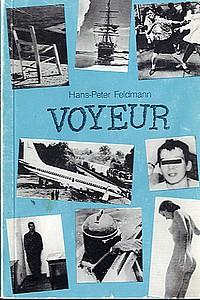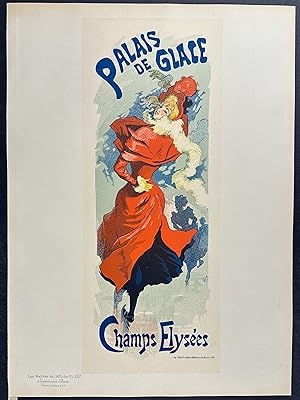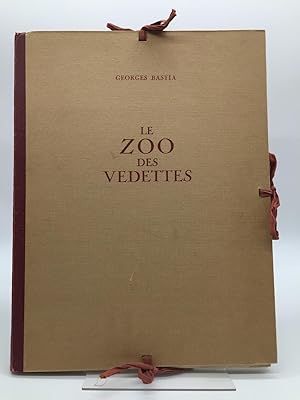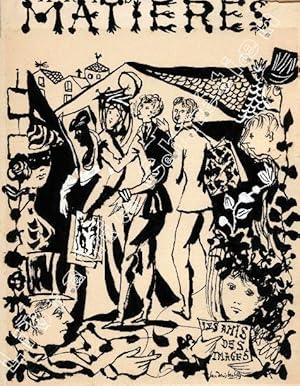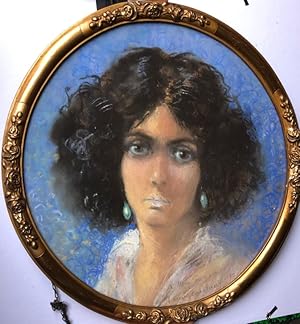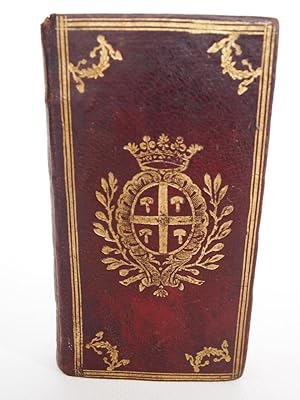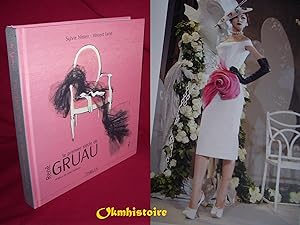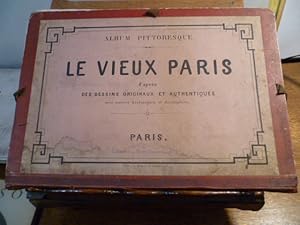art spectacle (478 résultats)
Type d'article
- Tous les types d'articles
- Livres (305)
- Magazines & Périodiques (4)
- Bandes dessinées
- Partitions de musique
- Art, Affiches et Gravures (164)
- Photographies (3)
- Cartes
-
Manuscrits &
Papiers anciens (2)
Etat
Reliure
Particularités
- Edition originale (74)
- Signé (22)
- Jaquette (16)
- Avec images (388)
- Sans impression à la demande (467)
Livraison gratuite
Pays
Evaluation du vendeur
-
When Hearts Are Trumps
Edité par Paris, 1896
Vendeur : Trillium Antique Prints & Rare Books, Franklin, TN, Etats-Unis
Art / Affiche / Gravure
Etat : Fine. William Bradley (illustrateur). This first edition, folio lithograph after a poster is from "Les Maitres de l'Affiche". The work was published by Imprimerie Chaix under the direction of Jules Cheret in Paris between 1896 and 1900. The prints were published as a monthly subscription, with 4 sent each month to subscribers. On 16 occasions "bonus" plates of original designs by noted artists were also included. Each lithograph features the blind embossed stamp of Maitres de l'Affiche designed by Cheret. Celebrated artists of the time contributed to the work including Steinlen, Mucha, Toulouse-Lautrec, Bonnard, Forain, Grasset, Meunier, Louis Rhead, Dudley Hardy, Beggarstaff, Edward Penfield et al. --- Jules Cheret was considered the father of poster art. "He dominated the series, with one in every four Maitres by him, the first in each monthly instalment, and 7 of the Special plates, a total of 67. With over 1000 poster designs to his credit, his large representation in the series is justified, although some critics have pointed out that, as the artistic director, he may have been biased towards selecting his own work." (Appelbaum p.iii) Cheret demonstrated a unique combination of artistic, technical, and entrepreneurial talent that spearheaded the poster industry. He opened his own print shop in 1866 in Paris and from 1881 on his shop operated as part of the Chaix firm which gave us "Les Maitres de l'Affiche". --- Among the most sought after plates in the work are the "Job" and "Moulin Rouge" by Toulouse Lautrec. Rennert noted of the "Job" by Mucha that "more than any other work of Mucha's, this beauty established him as the master of convoluted hair and the creator of unforgettable popular images; the poster was used for years in many variants all over the world, sometimes with marginal text in various languages. A classic by any standard." (Rennert, PAI-XLIX 389) "Jane Abdy called it "a secular icon," and indeed it is a magnificent production, considering that it advertises cigarette paper. "The background, in a dull imperial purple is a perfect foil for the golden curls of the smoking girl, whose locks are spread over the poster like the delicate filigree work of an Indian bracelet"(Abdy, p.136) --- This art subscription was created during the Belle Epoque period in France. "There was nothing exclusive about the 'joie de vivre' that swept Paris, at a delirious pace, out of the 19th century into the 20th. As Victor Hugo had observed, the city lived by, and for, the whole human race. Haussman's great boulevards had opened up a spacious stage where Paris made a spectacle of herself by day and night. Outdoors and indoors the walls of buildings flowered with posters that took their themes from the passing show of 'La Vie Parisenne.' Advertising never knew happier days. The most ephemeral of the arts has left us with a vision of the 'good old days' that vanished forever in the gunsmoke of 1914. Those gay nineties and naughty noughts that will always be remembered as 'La Belle Epoque.'(The beautiful era)" (Horizon p. 97) --- "By the 1890s the streets of every great metropolis were enlivened by large colourful posters (see The Great Poster Movement). The poster had not only caught the fancy of the broad public, but its best examples were already being regarded as works of art (specifically, as fine prints) to be exhibited, reviewed in journals, collected and reprinted in a manageable form. In the last five years of the century, the Imprimerie Chaix was to play great part in codifying, hallowing and perpetuating the ebullient period of 'La Belle Epoque.' It was in those years that the firm published "Les Maitres de l'Affiche" (Masters of the Poster) reduced lithographic versions, in authentic colours, of the best posters of Europe and America, by more than 90 great artists, posters that bring the period to life." (Appelbaum p.iii) --- The work is in very good to excellent condition. There may be a few minor imperfections to be expected with age. Please review the image carefully for condition and contact us with any questions. --- Paper Size ~ 11 1/4" by 15 1/2".
-
Don Quixote
Edité par Paris, 1896
Vendeur : Trillium Antique Prints & Rare Books, Franklin, TN, Etats-Unis
Art / Affiche / Gravure
Etat : Fine. Beggarstaff (illustrateur). This first edition, folio lithograph after a poster is from "Les Maitres de l'Affiche". The work was published by Imprimerie Chaix under the direction of Jules Cheret in Paris between 1896 and 1900. The prints were published as a monthly subscription, with 4 sent each month to subscribers. On 16 occasions "bonus" plates of original designs by noted artists were also included. Each lithograph features the blind embossed stamp of Maitres de l'Affiche designed by Cheret. Celebrated artists of the time contributed to the work including Steinlen, Mucha, Toulouse-Lautrec, Bonnard, Forain, Grasset, Meunier, Louis Rhead, Dudley Hardy, Beggarstaff, Edward Penfield et al. --- Jules Cheret was considered the father of poster art. "He dominated the series, with one in every four Maitres by him, the first in each monthly instalment, and 7 of the Special plates, a total of 67. With over 1000 poster designs to his credit, his large representation in the series is justified, although some critics have pointed out that, as the artistic director, he may have been biased towards selecting his own work." (Appelbaum p.iii) Cheret demonstrated a unique combination of artistic, technical, and entrepreneurial talent that spearheaded the poster industry. He opened his own print shop in 1866 in Paris and from 1881 on his shop operated as part of the Chaix firm which gave us "Les Maitres de l'Affiche". --- Among the most sought after plates in the work are the "Job" and "Moulin Rouge" by Toulouse Lautrec. Rennert noted of the "Job" by Mucha that "more than any other work of Mucha's, this beauty established him as the master of convoluted hair and the creator of unforgettable popular images; the poster was used for years in many variants all over the world, sometimes with marginal text in various languages. A classic by any standard." (Rennert, PAI-XLIX 389) "Jane Abdy called it "a secular icon," and indeed it is a magnificent production, considering that it advertises cigarette paper. "The background, in a dull imperial purple is a perfect foil for the golden curls of the smoking girl, whose locks are spread over the poster like the delicate filigree work of an Indian bracelet"(Abdy, p.136) --- This art subscription was created during the Belle Epoque period in France. "There was nothing exclusive about the 'joie de vivre' that swept Paris, at a delirious pace, out of the 19th century into the 20th. As Victor Hugo had observed, the city lived by, and for, the whole human race. Haussman's great boulevards had opened up a spacious stage where Paris made a spectacle of herself by day and night. Outdoors and indoors the walls of buildings flowered with posters that took their themes from the passing show of 'La Vie Parisenne.' Advertising never knew happier days. The most ephemeral of the arts has left us with a vision of the 'good old days' that vanished forever in the gunsmoke of 1914. Those gay nineties and naughty noughts that will always be remembered as 'La Belle Epoque.'(The beautiful era)" (Horizon p. 97) --- "By the 1890s the streets of every great metropolis were enlivened by large colourful posters (see The Great Poster Movement). The poster had not only caught the fancy of the broad public, but its best examples were already being regarded as works of art (specifically, as fine prints) to be exhibited, reviewed in journals, collected and reprinted in a manageable form. In the last five years of the century, the Imprimerie Chaix was to play great part in codifying, hallowing and perpetuating the ebullient period of 'La Belle Epoque.' It was in those years that the firm published "Les Maitres de l'Affiche" (Masters of the Poster) reduced lithographic versions, in authentic colours, of the best posters of Europe and America, by more than 90 great artists, posters that bring the period to life." (Appelbaum p.iii) --- The work is in very good to excellent condition. There may be a few minor imperfections to be expected with age. Please review the image carefully for condition and contact us with any questions. --- Paper Size ~ 11 1/4" by 15 1/2".
-
Recherches sur les théâtres de France, depuis l'année onze cent soixante-un jusques à présent, par M. de Beauchamps. Paris. Prault. 1735.
Vendeur : Mesnard - Comptoir du Livre Ancien, Ruelle-sur-Touvre, France
3 volumes in-12° reliés plein veau marron glacé, dos lisse, pièce de titre de maroquin rouge, de tomaison de maroquin vert sombre, dos décoré d'un semis d'étoiles, filets dorés d'encadrement sur les plats, 12 f. nchf. + 508 p., 2 f. nchf. 544 p., 3 f. nchf et 523 p. 3 coins un peu émoussés, frottement sur les coupes du tome 3. Beaux exemplaires en très bonne condition. NOTICE FOR FOREIGN CUSTOMERS : The ECONOMIC SHIPPING RATE is reserved by FRENCH POST for books whose weight is less than 2KG ! We have limited too this offer for books whose value is less than 30 euros. Shipping will increase if you choose this rate for a value or heavy book. If you select a Paypal payment in this particular case we cannot change the shipping rate on Abebooks but this one will increase in the Paypal invoice. So be careful please to select the appropriate shipping rate taking into consideration the book value or the weight or both.
-
Dictionnaire de musique. Paris. Veuve Duchesne. 1768.
Vendeur : Mesnard - Comptoir du Livre Ancien, Ruelle-sur-Touvre, France
1 volume in-8° relié plein veau marbré, dos à nerfs décoré, pièce de titre de maroquin rouge, un coin supérieur un peu émoussé, XII, 547 p., 13 planches hors-texte repliées. Très bon état. NOTICE FOR FOREIGN CUSTOMERS : The ECONOMIC SHIPPING RATE is reserved by FRENCH POST for books whose weight is less than 2KG ! We have limited too this offer for books whose value is less than 30 euros. Shipping will increase if you choose this rate for a value or heavy book. If you select a Paypal payment in this particular case we cannot change the shipping rate on Abebooks but this one will increase in the Paypal invoice. So be careful please to select the appropriate shipping rate taking into consideration the book value or the weight or both.
-
Vue perspective de la Salle de Spectacle de Bordeaux par M. Louis [ Gravure rehaussée en couleurs du Grand Théâtre de Bordeaux ]
Vendeur : Librairie du Cardinal, GRADIGNAN, France
rigide. 1 gravures légèrement rehaussée en couleurs format 24,5 x 15,5 cm (à vue) sous encadrement vitré format 30 x 25.8 cm., s.n., s.d. [ circa 1840-1850 ? ] Cette jolie gravure du Grand-Théâtre de Bordeaux, d'après la gravure originale publiée en 1782 par Victor Louis dans son grand livre sur son chef-d'oeuvre, connaîtra de multiples éditions, que l'on peut distinguer par la dénomination de la gravure mais également par diverses retouches (nuages, arbre sur la gauche, personnages, etc.). Notre gravure se signale par la dénomination originale, ainsi que par la permanence des reste du Château-Trompette sur la gauche. La gravure a été légèrement rehaussée à l'aquarelle. Bon état (petit frott. en marge de la gravure, très bon état par ailleurs). Langue: Français.
-
Théâtre Edouard VII. Kinemacolor Tous les jours en matinée et en soirée. Le Spectacle le plus attrayant, la plus jolie salle de Paris. La Vie et la Nature en couleurs naturelles dans toutes leurs manifestations intéressantes. L'après-midi de 5 à 7 heures Kinemacolor-Thé sous la direction de l'Hôtel Edouard VII ainsi que les Bars et Buffets dans les Salons les plus sélects. Orchestre spécial Piano Pleyel, Lyon & Cie
Edité par J.A. Poincelin, 1913
Vendeur : Librairie du Cardinal, GRADIGNAN, France
Edition originale
souple. 1 brochure in-12, J.A. Poincelin [ circa 1913-1914 ], 8 ff. et 1 f. volant joint (traduction des titres anglais et les grands voyages du Kinemacolor). Rappel du titre complet : Théâtre Edouard VII. Kinemacolor Tous les jours en matinée et en soirée. Le Spectacle le plus attrayant, la plus jolie salle de Paris. La Vie et la Nature en couleurs naturelles dans toutes leurs manifestations intéressantes. L'après-midi de 5 à 7 heures Kinemacolor-Thé sous la direction de l'Hôtel Edouard VII ainsi que les Bars et Buffets dans les Salons les plus sélects. Orchestre spécial Piano Pleyel, Lyon & Cie Très rare programme du Kinémacolor, procédé cinématographique mis au point par par George Smith et Charles Urban. L'obturateur de la caméra contenait un filtre orangé et bleu vert, donnant l'impression de couleur au film. Charles Urban fit construire le Théâtre Edouard VII à Paris en 1913 afin de projeter ses films en Kinemacolor ; la société de ce nom formée avec George Smith fit faillite en 1914. Le programme se compose de films de voyage ("La saison des bains à Ostende", "les chutes du Niagara", "le Lac de Lucerne", "Paris Pittoresque", "Le Japon" (avec tous les détails dans l'encart joint), mais aussi "La Lettre Infamante" (la lettre écarlate de Hawthorne), "Le Tentateur", etc. Bon état (couv. lég. frottée, très bon exemplaire par ailleurs) pour ce très rare document. Langue: Français.
-
Woman Amongst Flowers
Edité par Paris, 1896
Vendeur : Trillium Antique Prints & Rare Books, Franklin, TN, Etats-Unis
Art / Affiche / Gravure
Etat : Fine. Paul Berthon (illustrateur). This first edition, folio lithograph after a poster is from "Les Maitres de l'Affiche". The work was published by Imprimerie Chaix under the direction of Jules Cheret in Paris between 1896 and 1900. The prints were published as a monthly subscription, with 4 sent each month to subscribers. On 16 occasions "bonus" plates of original designs by noted artists were also included. Each lithograph features the blind embossed stamp of Maitres de l'Affiche designed by Cheret. Celebrated artists of the time contributed to the work including Steinlen, Mucha, Toulouse-Lautrec, Bonnard, Forain, Grasset, Meunier, Louis Rhead, Dudley Hardy, Beggarstaff, Edward Penfield et al. --- Jules Cheret was considered the father of poster art. "He dominated the series, with one in every four Maitres by him, the first in each monthly instalment, and 7 of the Special plates, a total of 67. With over 1000 poster designs to his credit, his large representation in the series is justified, although some critics have pointed out that, as the artistic director, he may have been biased towards selecting his own work." (Appelbaum p.iii) Cheret demonstrated a unique combination of artistic, technical, and entrepreneurial talent that spearheaded the poster industry. He opened his own print shop in 1866 in Paris and from 1881 on his shop operated as part of the Chaix firm which gave us "Les Maitres de l'Affiche". --- Among the most sought after plates in the work are the "Job" and "Moulin Rouge" by Toulouse Lautrec. Rennert noted of the "Job" by Mucha that "more than any other work of Mucha's, this beauty established him as the master of convoluted hair and the creator of unforgettable popular images; the poster was used for years in many variants all over the world, sometimes with marginal text in various languages. A classic by any standard." (Rennert, PAI-XLIX 389) "Jane Abdy called it "a secular icon," and indeed it is a magnificent production, considering that it advertises cigarette paper. "The background, in a dull imperial purple is a perfect foil for the golden curls of the smoking girl, whose locks are spread over the poster like the delicate filigree work of an Indian bracelet"(Abdy, p.136) --- This art subscription was created during the Belle Epoque period in France. "There was nothing exclusive about the 'joie de vivre' that swept Paris, at a delirious pace, out of the 19th century into the 20th. As Victor Hugo had observed, the city lived by, and for, the whole human race. Haussman's great boulevards had opened up a spacious stage where Paris made a spectacle of herself by day and night. Outdoors and indoors the walls of buildings flowered with posters that took their themes from the passing show of 'La Vie Parisenne.' Advertising never knew happier days. The most ephemeral of the arts has left us with a vision of the 'good old days' that vanished forever in the gunsmoke of 1914. Those gay nineties and naughty noughts that will always be remembered as 'La Belle Epoque.'(The beautiful era)" (Horizon p. 97) --- "By the 1890s the streets of every great metropolis were enlivened by large colourful posters (see The Great Poster Movement). The poster had not only caught the fancy of the broad public, but its best examples were already being regarded as works of art (specifically, as fine prints) to be exhibited, reviewed in journals, collected and reprinted in a manageable form. In the last five years of the century, the Imprimerie Chaix was to play great part in codifying, hallowing and perpetuating the ebullient period of 'La Belle Epoque.' It was in those years that the firm published "Les Maitres de l'Affiche" (Masters of the Poster) reduced lithographic versions, in authentic colours, of the best posters of Europe and America, by more than 90 great artists, posters that bring the period to life." (Appelbaum p.iii) --- The work is in very good to excellent condition. There may be a few minor imperfections to be expected with age. Please review the image carefully for condition and contact us with any questions. --- Paper Size ~ 11 1/4" by 15 1/2".
-
La Pieuse Erreur
Edité par Paris, 1896
Vendeur : Trillium Antique Prints & Rare Books, Franklin, TN, Etats-Unis
Art / Affiche / Gravure
Etat : Fine. Willette (illustrateur). This first edition, folio lithograph after a poster is from "Les Maitres de l'Affiche". The work was published by Imprimerie Chaix under the direction of Jules Cheret in Paris between 1896 and 1900. The prints were published as a monthly subscription, with 4 sent each month to subscribers. On 16 occasions "bonus" plates of original designs by noted artists were also included. Each lithograph features the blind embossed stamp of Maitres de l'Affiche designed by Cheret. Celebrated artists of the time contributed to the work including Steinlen, Mucha, Toulouse-Lautrec, Bonnard, Forain, Grasset, Meunier, Louis Rhead, Dudley Hardy, Beggarstaff, Edward Penfield et al. --- Jules Cheret was considered the father of poster art. "He dominated the series, with one in every four Maitres by him, the first in each monthly instalment, and 7 of the Special plates, a total of 67. With over 1000 poster designs to his credit, his large representation in the series is justified, although some critics have pointed out that, as the artistic director, he may have been biased towards selecting his own work." (Appelbaum p.iii) Cheret demonstrated a unique combination of artistic, technical, and entrepreneurial talent that spearheaded the poster industry. He opened his own print shop in 1866 in Paris and from 1881 on his shop operated as part of the Chaix firm which gave us "Les Maitres de l'Affiche". --- Among the most sought after plates in the work are the "Job" and "Moulin Rouge" by Toulouse Lautrec. Rennert noted of the "Job" by Mucha that "more than any other work of Mucha's, this beauty established him as the master of convoluted hair and the creator of unforgettable popular images; the poster was used for years in many variants all over the world, sometimes with marginal text in various languages. A classic by any standard." (Rennert, PAI-XLIX 389) "Jane Abdy called it "a secular icon," and indeed it is a magnificent production, considering that it advertises cigarette paper. "The background, in a dull imperial purple is a perfect foil for the golden curls of the smoking girl, whose locks are spread over the poster like the delicate filigree work of an Indian bracelet"(Abdy, p.136) --- This art subscription was created during the Belle Epoque period in France. "There was nothing exclusive about the 'joie de vivre' that swept Paris, at a delirious pace, out of the 19th century into the 20th. As Victor Hugo had observed, the city lived by, and for, the whole human race. Haussman's great boulevards had opened up a spacious stage where Paris made a spectacle of herself by day and night. Outdoors and indoors the walls of buildings flowered with posters that took their themes from the passing show of 'La Vie Parisenne.' Advertising never knew happier days. The most ephemeral of the arts has left us with a vision of the 'good old days' that vanished forever in the gunsmoke of 1914. Those gay nineties and naughty noughts that will always be remembered as 'La Belle Epoque.'(The beautiful era)" (Horizon p. 97) --- "By the 1890s the streets of every great metropolis were enlivened by large colourful posters (see The Great Poster Movement). The poster had not only caught the fancy of the broad public, but its best examples were already being regarded as works of art (specifically, as fine prints) to be exhibited, reviewed in journals, collected and reprinted in a manageable form. In the last five years of the century, the Imprimerie Chaix was to play great part in codifying, hallowing and perpetuating the ebullient period of 'La Belle Epoque.' It was in those years that the firm published "Les Maitres de l'Affiche" (Masters of the Poster) reduced lithographic versions, in authentic colours, of the best posters of Europe and America, by more than 90 great artists, posters that bring the period to life." (Appelbaum p.iii) --- The work is in very good to excellent condition. There may be a few minor imperfections to be expected with age. Please review the image carefully for condition and contact us with any questions. --- Paper Size ~ 11 1/4" by 15 1/2".
-
Le Pays des Fees
Edité par Paris, 1896
Vendeur : Trillium Antique Prints & Rare Books, Franklin, TN, Etats-Unis
Art / Affiche / Gravure
Etat : Fine. Jules Cheret (illustrateur). This first edition, folio lithograph after a poster is from "Les Maitres de l'Affiche". The work was published by Imprimerie Chaix under the direction of Jules Cheret in Paris between 1896 and 1900. The prints were published as a monthly subscription, with 4 sent each month to subscribers. On 16 occasions "bonus" plates of original designs by noted artists were also included. Each lithograph features the blind embossed stamp of Maitres de l'Affiche designed by Cheret. Celebrated artists of the time contributed to the work including Steinlen, Mucha, Toulouse-Lautrec, Bonnard, Forain, Grasset, Meunier, Louis Rhead, Dudley Hardy, Beggarstaff, Edward Penfield et al. --- Jules Cheret was considered the father of poster art. "He dominated the series, with one in every four Maitres by him, the first in each monthly instalment, and 7 of the Special plates, a total of 67. With over 1000 poster designs to his credit, his large representation in the series is justified, although some critics have pointed out that, as the artistic director, he may have been biased towards selecting his own work." (Appelbaum p.iii) Cheret demonstrated a unique combination of artistic, technical, and entrepreneurial talent that spearheaded the poster industry. He opened his own print shop in 1866 in Paris and from 1881 on his shop operated as part of the Chaix firm which gave us "Les Maitres de l'Affiche". --- Among the most sought after plates in the work are the "Job" and "Moulin Rouge" by Toulouse Lautrec. Rennert noted of the "Job" by Mucha that "more than any other work of Mucha's, this beauty established him as the master of convoluted hair and the creator of unforgettable popular images; the poster was used for years in many variants all over the world, sometimes with marginal text in various languages. A classic by any standard." (Rennert, PAI-XLIX 389) "Jane Abdy called it "a secular icon," and indeed it is a magnificent production, considering that it advertises cigarette paper. "The background, in a dull imperial purple is a perfect foil for the golden curls of the smoking girl, whose locks are spread over the poster like the delicate filigree work of an Indian bracelet"(Abdy, p.136) --- This art subscription was created during the Belle Epoque period in France. "There was nothing exclusive about the 'joie de vivre' that swept Paris, at a delirious pace, out of the 19th century into the 20th. As Victor Hugo had observed, the city lived by, and for, the whole human race. Haussman's great boulevards had opened up a spacious stage where Paris made a spectacle of herself by day and night. Outdoors and indoors the walls of buildings flowered with posters that took their themes from the passing show of 'La Vie Parisenne.' Advertising never knew happier days. The most ephemeral of the arts has left us with a vision of the 'good old days' that vanished forever in the gunsmoke of 1914. Those gay nineties and naughty noughts that will always be remembered as 'La Belle Epoque.'(The beautiful era)" (Horizon p. 97) --- "By the 1890s the streets of every great metropolis were enlivened by large colourful posters (see The Great Poster Movement). The poster had not only caught the fancy of the broad public, but its best examples were already being regarded as works of art (specifically, as fine prints) to be exhibited, reviewed in journals, collected and reprinted in a manageable form. In the last five years of the century, the Imprimerie Chaix was to play great part in codifying, hallowing and perpetuating the ebullient period of 'La Belle Epoque.' It was in those years that the firm published "Les Maitres de l'Affiche" (Masters of the Poster) reduced lithographic versions, in authentic colours, of the best posters of Europe and America, by more than 90 great artists, posters that bring the period to life." (Appelbaum p.iii) --- The work is in very good to excellent condition. There may be a few minor imperfections to be expected with age. Please review the image carefully for condition and contact us with any questions. --- Paper Size ~ 11 1/4" by 15 1/2".
-
Le Courrier Francais
Edité par Paris, 1896
Vendeur : Trillium Antique Prints & Rare Books, Franklin, TN, Etats-Unis
Art / Affiche / Gravure
Etat : Fine. Jules Cheret (illustrateur). This first edition, folio lithograph after a poster is from "Les Maitres de l'Affiche". The work was published by Imprimerie Chaix under the direction of Jules Cheret in Paris between 1896 and 1900. The prints were published as a monthly subscription, with 4 sent each month to subscribers. On 16 occasions "bonus" plates of original designs by noted artists were also included. Each lithograph features the blind embossed stamp of Maitres de l'Affiche designed by Cheret. Celebrated artists of the time contributed to the work including Steinlen, Mucha, Toulouse-Lautrec, Bonnard, Forain, Grasset, Meunier, Louis Rhead, Dudley Hardy, Beggarstaff, Edward Penfield et al. --- Jules Cheret was considered the father of poster art. "He dominated the series, with one in every four Maitres by him, the first in each monthly instalment, and 7 of the Special plates, a total of 67. With over 1000 poster designs to his credit, his large representation in the series is justified, although some critics have pointed out that, as the artistic director, he may have been biased towards selecting his own work." (Appelbaum p.iii) Cheret demonstrated a unique combination of artistic, technical, and entrepreneurial talent that spearheaded the poster industry. He opened his own print shop in 1866 in Paris and from 1881 on his shop operated as part of the Chaix firm which gave us "Les Maitres de l'Affiche". --- Among the most sought after plates in the work are the "Job" and "Moulin Rouge" by Toulouse Lautrec. Rennert noted of the "Job" by Mucha that "more than any other work of Mucha's, this beauty established him as the master of convoluted hair and the creator of unforgettable popular images; the poster was used for years in many variants all over the world, sometimes with marginal text in various languages. A classic by any standard." (Rennert, PAI-XLIX 389) "Jane Abdy called it "a secular icon," and indeed it is a magnificent production, considering that it advertises cigarette paper. "The background, in a dull imperial purple is a perfect foil for the golden curls of the smoking girl, whose locks are spread over the poster like the delicate filigree work of an Indian bracelet"(Abdy, p.136) --- This art subscription was created during the Belle Epoque period in France. "There was nothing exclusive about the 'joie de vivre' that swept Paris, at a delirious pace, out of the 19th century into the 20th. As Victor Hugo had observed, the city lived by, and for, the whole human race. Haussman's great boulevards had opened up a spacious stage where Paris made a spectacle of herself by day and night. Outdoors and indoors the walls of buildings flowered with posters that took their themes from the passing show of 'La Vie Parisenne.' Advertising never knew happier days. The most ephemeral of the arts has left us with a vision of the 'good old days' that vanished forever in the gunsmoke of 1914. Those gay nineties and naughty noughts that will always be remembered as 'La Belle Epoque.'(The beautiful era)" (Horizon p. 97) --- "By the 1890s the streets of every great metropolis were enlivened by large colourful posters (see The Great Poster Movement). The poster had not only caught the fancy of the broad public, but its best examples were already being regarded as works of art (specifically, as fine prints) to be exhibited, reviewed in journals, collected and reprinted in a manageable form. In the last five years of the century, the Imprimerie Chaix was to play great part in codifying, hallowing and perpetuating the ebullient period of 'La Belle Epoque.' It was in those years that the firm published "Les Maitres de l'Affiche" (Masters of the Poster) reduced lithographic versions, in authentic colours, of the best posters of Europe and America, by more than 90 great artists, posters that bring the period to life." (Appelbaum p.iii) --- The work is in very good to excellent condition. There may be a few minor imperfections to be expected with age. Please review the image carefully for condition and contact us with any questions. --- Paper Size ~ 11 1/4" by 15 1/2".
-
Maison Napoleon
Edité par Paris, 1896
Vendeur : Trillium Antique Prints & Rare Books, Franklin, TN, Etats-Unis
Art / Affiche / Gravure
Etat : Fine. De Riquer (illustrateur). This first edition, folio lithograph after a poster is from "Les Maitres de l'Affiche". The work was published by Imprimerie Chaix under the direction of Jules Cheret in Paris between 1896 and 1900. The prints were published as a monthly subscription, with 4 sent each month to subscribers. On 16 occasions "bonus" plates of original designs by noted artists were also included. Each lithograph features the blind embossed stamp of Maitres de l'Affiche designed by Cheret. Celebrated artists of the time contributed to the work including Steinlen, Mucha, Toulouse-Lautrec, Bonnard, Forain, Grasset, Meunier, Louis Rhead, Dudley Hardy, Beggarstaff, Edward Penfield et al. --- Jules Cheret was considered the father of poster art. "He dominated the series, with one in every four Maitres by him, the first in each monthly instalment, and 7 of the Special plates, a total of 67. With over 1000 poster designs to his credit, his large representation in the series is justified, although some critics have pointed out that, as the artistic director, he may have been biased towards selecting his own work." (Appelbaum p.iii) Cheret demonstrated a unique combination of artistic, technical, and entrepreneurial talent that spearheaded the poster industry. He opened his own print shop in 1866 in Paris and from 1881 on his shop operated as part of the Chaix firm which gave us "Les Maitres de l'Affiche". --- Among the most sought after plates in the work are the "Job" and "Moulin Rouge" by Toulouse Lautrec. Rennert noted of the "Job" by Mucha that "more than any other work of Mucha's, this beauty established him as the master of convoluted hair and the creator of unforgettable popular images; the poster was used for years in many variants all over the world, sometimes with marginal text in various languages. A classic by any standard." (Rennert, PAI-XLIX 389) "Jane Abdy called it "a secular icon," and indeed it is a magnificent production, considering that it advertises cigarette paper. "The background, in a dull imperial purple is a perfect foil for the golden curls of the smoking girl, whose locks are spread over the poster like the delicate filigree work of an Indian bracelet"(Abdy, p.136) --- This art subscription was created during the Belle Epoque period in France. "There was nothing exclusive about the 'joie de vivre' that swept Paris, at a delirious pace, out of the 19th century into the 20th. As Victor Hugo had observed, the city lived by, and for, the whole human race. Haussman's great boulevards had opened up a spacious stage where Paris made a spectacle of herself by day and night. Outdoors and indoors the walls of buildings flowered with posters that took their themes from the passing show of 'La Vie Parisenne.' Advertising never knew happier days. The most ephemeral of the arts has left us with a vision of the 'good old days' that vanished forever in the gunsmoke of 1914. Those gay nineties and naughty noughts that will always be remembered as 'La Belle Epoque.'(The beautiful era)" (Horizon p. 97) --- "By the 1890s the streets of every great metropolis were enlivened by large colourful posters (see The Great Poster Movement). The poster had not only caught the fancy of the broad public, but its best examples were already being regarded as works of art (specifically, as fine prints) to be exhibited, reviewed in journals, collected and reprinted in a manageable form. In the last five years of the century, the Imprimerie Chaix was to play great part in codifying, hallowing and perpetuating the ebullient period of 'La Belle Epoque.' It was in those years that the firm published "Les Maitres de l'Affiche" (Masters of the Poster) reduced lithographic versions, in authentic colours, of the best posters of Europe and America, by more than 90 great artists, posters that bring the period to life." (Appelbaum p.iii) --- The work is in very good to excellent condition. There may be a few minor imperfections to be expected with age. Please review the image carefully for condition and contact us with any questions. --- Paper Size ~ 11 1/4" by 15 1/2".
-
Pippermint
Edité par Paris, 1896
Vendeur : Trillium Antique Prints & Rare Books, Franklin, TN, Etats-Unis
Art / Affiche / Gravure
Etat : Fine. Jules Cheret (illustrateur). This first edition, folio lithograph after a poster is from "Les Maitres de l'Affiche". The work was published by Imprimerie Chaix under the direction of Jules Cheret in Paris between 1896 and 1900. The prints were published as a monthly subscription, with 4 sent each month to subscribers. On 16 occasions "bonus" plates of original designs by noted artists were also included. Each lithograph features the blind embossed stamp of Maitres de l'Affiche designed by Cheret. Celebrated artists of the time contributed to the work including Steinlen, Mucha, Toulouse-Lautrec, Bonnard, Forain, Grasset, Meunier, Louis Rhead, Dudley Hardy, Beggarstaff, Edward Penfield et al. --- Jules Cheret was considered the father of poster art. "He dominated the series, with one in every four Maitres by him, the first in each monthly instalment, and 7 of the Special plates, a total of 67. With over 1000 poster designs to his credit, his large representation in the series is justified, although some critics have pointed out that, as the artistic director, he may have been biased towards selecting his own work." (Appelbaum p.iii) Cheret demonstrated a unique combination of artistic, technical, and entrepreneurial talent that spearheaded the poster industry. He opened his own print shop in 1866 in Paris and from 1881 on his shop operated as part of the Chaix firm which gave us "Les Maitres de l'Affiche". --- Among the most sought after plates in the work are the "Job" and "Moulin Rouge" by Toulouse Lautrec. Rennert noted of the "Job" by Mucha that "more than any other work of Mucha's, this beauty established him as the master of convoluted hair and the creator of unforgettable popular images; the poster was used for years in many variants all over the world, sometimes with marginal text in various languages. A classic by any standard." (Rennert, PAI-XLIX 389) "Jane Abdy called it "a secular icon," and indeed it is a magnificent production, considering that it advertises cigarette paper. "The background, in a dull imperial purple is a perfect foil for the golden curls of the smoking girl, whose locks are spread over the poster like the delicate filigree work of an Indian bracelet"(Abdy, p.136) --- This art subscription was created during the Belle Epoque period in France. "There was nothing exclusive about the 'joie de vivre' that swept Paris, at a delirious pace, out of the 19th century into the 20th. As Victor Hugo had observed, the city lived by, and for, the whole human race. Haussman's great boulevards had opened up a spacious stage where Paris made a spectacle of herself by day and night. Outdoors and indoors the walls of buildings flowered with posters that took their themes from the passing show of 'La Vie Parisenne.' Advertising never knew happier days. The most ephemeral of the arts has left us with a vision of the 'good old days' that vanished forever in the gunsmoke of 1914. Those gay nineties and naughty noughts that will always be remembered as 'La Belle Epoque.'(The beautiful era)" (Horizon p. 97) --- "By the 1890s the streets of every great metropolis were enlivened by large colourful posters (see The Great Poster Movement). The poster had not only caught the fancy of the broad public, but its best examples were already being regarded as works of art (specifically, as fine prints) to be exhibited, reviewed in journals, collected and reprinted in a manageable form. In the last five years of the century, the Imprimerie Chaix was to play great part in codifying, hallowing and perpetuating the ebullient period of 'La Belle Epoque.' It was in those years that the firm published "Les Maitres de l'Affiche" (Masters of the Poster) reduced lithographic versions, in authentic colours, of the best posters of Europe and America, by more than 90 great artists, posters that bring the period to life." (Appelbaum p.iii) --- The work is in very good to excellent condition. There may be a few minor imperfections to be expected with age. Please review the image carefully for condition and contact us with any questions. --- Paper Size ~ 11 1/4" by 15 1/2".
-
An original press photograph of the improbable spectacle of Winston S. Churchill with Ernst Bohle, the leader of the Organization of the Nazi Party Abroad, smiling together at the end of their 1 October 1937 meeting at Churchill's London residence
Edité par Keystone View Company 6 October 1937, London, 1937
Vendeur : Churchill Book Collector ABAA/ILAB/IOBA, San Diego, CA, Etats-Unis
Photograph. This original press photo captures the improbable spectacle of Winston Churchill and Ernst Bohle - the leader of the Organization of the Nazi Party Abroad - smiling together outside of Churchill s London residence on 1 October 1937. This press photo belonged to the archives of The Daily Telegraph. The image, measuring 10 x 8 inches (25.4 x 20.3 cm), is a gelatin silver print on heavy matte photo paper. Condition is very good. The paper is crisp, clean, and free of scratches with light wear along the edges confined to the margins. Not unsuitably, The Daily Telegraph Art department hand-applied paint to isolate Churchill. The verso bears the copyright stamp of "Keystone View Company", two received stamps of The Daily Telegraph dated OCT 1937, and a typed caption titled "BRITISH-BORN LEADER OF FOREIGN NAZIS MEETS WINSTON CHURCHILL". The caption is dated "1.10.37", and reads, "HERR ERNST BOHLE, the leader of the Organisation of Nazis Abroad who arrived in London yesterday, today visited Mr. WINSTON CHURCHILL at the latter s flat in Victoria to "put things straight with regard to his recent attacks on the foreign organisation of the Nazi party."" This photograph is housed in a removable, archival mylar sleeve within a rigid, crimson cloth folder. When this photograph was taken Churchill-was still in his "Wilderness Years"; he spent most of the 1930s out of power and out of favor, warning about the dangers of a rising Nazi Germany, often at odds with both his party leadership and prevailing public sentiment. Churchill s pen was often his primary means of communicating with the public. On 20 August 1937 Churchill published an article titled "A Plain Word to the Nazis" in the Evening Standard in which he called on Parliament to increase scrutiny and surveillance of Germans living in Britain and to deport them if necessary. He wrote, "A Nazi minister and department have actually been set up in Berlin within the present year to promote and concert the action of Nazi Germans living abroad." This minister was Ernst Wilhelm Bohle (1903-1960), a British born Nazi Party member who in 1937 was appointed to lead the Organization of the Nazi Party Abroad. Churchill s article touched a nerve. In a 31 August letter, Churchill s literary agent, Emery Reves, wrote "Two days ago, the President of this Organization, Herr Bohle [and two ministers] delivered speeches, all three referring to your article and protesting against your accusations." (WC and ER Correspondence 1937-1964, p.56) Bohle expressed admiration for British patriotism and that the British "should be among the first people to approve of our work in developing the same kind of patriotism for the Third Reich." Churchill, displaying the earnest desire to avoid the war that he would fight with such ferocious resolve only a few years later, responded to Bohle, writing "I see Herr Bohle has expressed a wish to talk this over with me. I should be delighted to do anything in the power of a private member to remove this new embarrassment to Anglo-German goodwill." They met on 1 October 1937. Bohle later recounted the meeting "in Winston s home" lasting "more than an hour" during his trial in Nuremburg: "I had ample opportunity in this thoroughly cordial conversation to describe the activity of the Auslands-Organisation and to dispel his misgivings. At the end he accompanied me to my car and let himself be photographed with me, in order, as he said, to show the world that we were parting as friends." (Nuremberg Trial Proceedings, 25 March 1946, morning session) On 7 October Reves wrote to Churchill "I have seen in Marseille, in a local paper, a picture of you together with Herr Bohle. Your expression shows that the conversation must have been a very amusing one." (Correspondence, p. 66) Churchill s amused look aside, two and a half years later Churchill would be Prime Minister of a Britain fighting desperately to survive the consequences of Nazi "patriotism".
-
Tapisseries de Jean Lurcat 1939-1957
Edité par Pierre Vorms Editeur d'Art, 1958
Vendeur : The Cary Collection, Bristol, CT, Etats-Unis
Livre Edition originale
Hardcover. Etat : Very Good. Etat de la jaquette : Very Good. 1st Edition. [193] pp. Pierre Vorms Editeur d'Art 1958 First Edition 12 3/4" x 9 3/4" Jean Lurçat (1 July 1892 - 6 January 1966) was a French artist noted for his role in the revival of contemporary tapestry. Biography He was born in Bruyères, Vosges, the son of Lucien Jean Baptiste Lurçat and Marie Emilie Marguerite L'Hote. He was the brother of André Lurçat, who became an architect. After his secondary education at Épinal, he enrolled at La Faculté des sciences de Nancy and studied medicine. He went to Switzerland and Germany (Munich) and in leaving his educational path, he went to the workshop of Victor Prouvé, the head of the École de Nancy. Painting and the War In 1912, Jean Lurçat took residence in Paris with his brother André. He enrolled at the Académie Colarossi, then at the workshop of the engraver, Bernard Naudin. He met painters such as Matisse, Cézanne, Renoir; his friends included Rainer Maria Rilke, Antoine Bourdelle, and Elie Faure. Lurçat and three associates founded the Feuilles de Mai (The leaves of May), a journal of art in which these celebrities participated. He then became an apprentice of the painter Jean-Paul Lafitte with whom he had an exhibition at La faculté des sciences de Marseille. His first journey to Italy was interrupted in August by the declaration of war. Back in France, Lurçat joined the infantry, but was evacuated on 15 November after falling ill. During his recovery to health, in 1915, he practised painting and lithography. In July 1916, he returned to the front, but was evacuated once again due to injury. He never returned to the front. In September, his art was put on exhibition in Zürich. Discovery of tapestry In 1917, Jean Lurçat made his first tapestries: Filles Vertes (Green Girls) and Soirée dans Grenade (Evening in Grenada). At the end of the war in 1918, he returned to Switzerland where he had a holiday in Ticino (Swiss Italy), with Rilke, Busoni, Hermann Hesse and Jeanne Bucher. His second exhibition took place in Zürich in the same year. In 1920, he travelled extensively: Berlin, Munich, Rome, Naples. Then he took up residence in Paris with Marthe Hennebert. It was she who wove two tapestries: Pêcheur (Fisherman) and Piscine (Swimming pool). He unveiled in the same year, at Le Salon des Indépendants, two tapestries and four paintings. He met the art merchant Étienne Bignou. In 1921, Jean Lurçat met Louis Marcoussis, he discovered Picasso and Max Jacob, and created decoration and costumes for Le spectacle de la Compagnie Pitoeff: "He who receives slaps", and then spent the autumn near the Baltic sea. The following year, he created his fifth tapestry, Le Cirque (the circus), for Mme. Cuttoli. His first personal exhibition took place in Paris in April and September. He made a large decoration on a wall (no longer visible today) at the Castle of Villeflix. Then he went to Berlin, where he met Ferruccio Busoni. During the next two years Lurçat resumed travelling. In 1923 he went to Spain; in 1924 he went to North Africa, the Sahara, Greece and Asia Minor. Upon his return, he signed a contract without exclusivity with his friend, Étienne Bignou. His brother André built his new house, Villa Seurat, in Paris. He devoted a portion of the year 1924 to the making of his sixth tapestry, Les arbres (The trees). On 15 December, Lurçat married Marthe Hennebert and traveled in 1925 to Scotland, then Spain and northern Africa. Upon his return, he took up residence at La Villa Seurat. He participated in several expositions with Raoul Dufy, Marcoussis, Laglenne and others. He revealed, at the home of Jeanne Bucher, elements of decoration (carpets and paintings) of Le Vertige, a film by Marcel l'Herbier. In 1926, he exhibited in Paris and Brussels, and participated in collective exhibitions in Vienna, Paris, and Anvers. His fame began due to several articles devoted to him.
-
Almanach parisien, en faveur des etrangers et des voyageurs : indiquant par ordre alphabetique, 1. Tous les monumens des beaux-arts . 2. Les spectacles, les promenades & generalement tous les endroits dignes de curiosite. 3. Les chateaux, parcs, maisons royales & maisons de plaisance, qui environnent la capitale a 15, a 18 lieues. 4. Tout ce qui peut etre utile & necessaire a savoir pour un voyageur qui sejourne a Paris. 5. Un recueil d'anecdotes interessantes & plaisantes
Edité par Chez la veuve Duchesne, 1788
Vendeur : Schilb Antiquarian, Columbia, MO, Etats-Unis
Livre Edition originale
Hardcover. Etat : Near Fine. 1st Edition. 1788 1ed French Almanac Parisien Louis XVI Illustrated Tourist Guide Castles Art The Almanach Parisien was a mid-18th-century French almanac designed for foreigners and travelers in Paris. This 1788 edition covers a variety of topics including Parisian monuments and fine art, descriptions of curious places, castles, parks, and royal houses, general information for those visiting Paris, and a collection of interesting anecdotes by Paris locals. It features 8 fine engravings depicting many of these locations. Item number: #5542 Price: $499 France Almanach parisien, en faveur des etrangers et des voyageurs : indiquant par ordre alphabetique, 1. Tous les monumens des beaux-arts . 2. Les spectacles, les promenades & generalement tous les endroits dignes de curiosite 3. Les chateaux, parcs, maisons royales & maisons de plaisance, qui environnent la capitale a 15, a 18 lieues. 4. Tout ce qui peut etre utile & necessaire a savoir pour un voyageur qui sejourne a Paris. 5. Un recueil d'anecdotes interessantes & plaisantes A Paris : Chez la veuve Duchesne ., 1788. First edition. Details: Collation: Complete with all pages 514, [12] 8 full-page plates Language: French Binding: Leather; tight & secure Size: ~4.75in X 2.75in (12cm x 7cm) Our Guarantee: Very Fast. Very Safe. Free Shipping Worldwide. Customer satisfaction is our priority! Notify us with 7 days of receiving, and we will offer a full refund without reservation! 5542 Photos available upon request.
-
Poésie et théâtre nouvelles tendances 20 spectacles, chaque mardi et mercredi, à 18h et 19h. Musée municipal d'Art moderne. Affichette 320x242mm indiquant les dates des performances et les noms des participants parmi lesquels François Dufrène, Robert Filliou, Bernard Heidsieck, Jean Clarence Lambert, Ghérasim Luca, Jean Jacques Lebel, Alain Jouffroy, Emmett Williams, entre autres. Joint: -Annonce pour le spectacle "Incidents", happening conçu et réalisé par Jean Jacques Lebel, le 8 octobre 1963, 2 feuilles agrafées. -Programme des dix manifestations des Arts du Langage du 1er au 30 octobre 1963, 2 feuilles agrafée. Tampons "Centre d'études et de documentation de l'avant-garde culturelle" et annotations, documents jaunis. Pas de jaquette Couverture souple Livre.
-
3 brouillon de lettre signée, pièce signée et lettre autographe signée. 6 In-4 janvier - février 1793 Une adresse au dos. bon Petit dossier sur les démarches engagées par le tragédien Rézicourt [François Geffroy-Lepoitevin, dit], pensionnaire du Théâtre de la rue Feydeau, pour que celui-ci respecte ses conditions d'engagement. «Lorsque vous m'avez engagé, c'était pour jouer la comédie et l'opéra. Votre entreprise a été fondée sur la réunion de ces deux genres. Vous n'aviez jamais cessé de les avoir à l'époque de notre traité, ce traité m'oblige à les jouer tous deux [.]. Cependant, il paroît que vous renoncez tout à fait à la Comédie et je me vois forcé de vous faire à cet égard mes justes réclamations. Si ma carrière théâtrale devoit finir avec mon engagement, je sacrifirois volontiers mon amour propre et ma réputation d'acteur à votre manière de voir, mais mon état dépend de cette réputation et vous ne pouvez justement me ravir l'un et l'autre [.]. On m'offroit à Pasques dernier 12.000 # ; et de payer un dédit considérable. Auroit-on fait cette offre à un acteur qui n'eût pas joué la comédie depuis six ans ? Me la feroit-on encore dans 6 ans si j'étois tout ce temps sans la jouer ? L'administration me fit manquer cette place ; elle exigea l'exécution de mon engagement, en protestant que, de son côté, elle en remploroit fidèlement les clauses. Vous aviez ce droit, MM., et je ne m'en plaignis pas. Mais vous n'avez pas celui de me faire perdre mon état, en me condamnant à une inaction mortelle pour mon talent et ma réputation. La Comédie n'est pas un art que l'on puisse exercer et cultiver seul ; en m'engageant pour la jouer, vous avez contracté l'obligagtion de m'en fournir les moyens [.]». Miramond, le secrétaire général du Théâtre Feydeau lui répond que le Théâtre fera tout pour le satisfaire. «Vous pouvez d'ailleurs vous en rapporter à son intérest qui se trouve tellement lié avec le vôtre qu'elle ne pourrait, sans nuire à l'entreprise, négliger les moyens d'offrir le plus avantageusement possible au Public un acteur d'un talent aussi distingué [.]». Le troisième document est le brouillon de la requête engagée par Rézicourt auprès des autorités judiciaires, pour que le Théâtre Feydeau mette de nouveau à son répertoire des comédies et non plus seulement des opéras.
-
Voyeur 1
Edité par OFAC Art Contemporain, 1994
Vendeur : Blue Cellar Books, Oxford, UK, Royaume-Uni
Livre
Soft cover. Etat : Near Fine. Rare copy of the sought-after first volume of Feldmann's protean work of latter day photo-conceptualism Voyeur, which has gone on to be issued in five further editions, with each issue altering the format and presentation of the source material. Taking the form of an affordable mass market paperback, Voyeur is a compact representation of society as image spectacle. A sprawling taxonomy of vernacular photography, images from every possible genre --crime, fashion, sports, advertising, glamour magazines and on and on, are presented scrapbook style in miniaturised black and white half-tone reproductions. "Voyeur trawls the image wreckage of our consumer-driven culture, making eccentric or sinister juxtapositions (shots of nude women next to aircraft crashes) and cataloging the blandness of media bombardment to render its toxic assault visible to us, its near-helpless voyeurs."--from the publisher of the 2009 reprint.
-
Palais de Glace
Edité par Paris, 1896
Vendeur : Trillium Antique Prints & Rare Books, Franklin, TN, Etats-Unis
Art / Affiche / Gravure
Etat : Fine. Jules Cheret (illustrateur). This first edition, folio lithograph after a poster is from "Les Maitres de l'Affiche". The work was published by Imprimerie Chaix under the direction of Jules Cheret in Paris between 1896 and 1900. The prints were published as a monthly subscription, with 4 sent each month to subscribers. On 16 occasions "bonus" plates of original designs by noted artists were also included. Each lithograph features the blind embossed stamp of Maitres de l'Affiche designed by Cheret. Celebrated artists of the time contributed to the work including Steinlen, Mucha, Toulouse-Lautrec, Bonnard, Forain, Grasset, Meunier, Louis Rhead, Dudley Hardy, Beggarstaff, Edward Penfield et al. --- Jules Cheret was considered the father of poster art. "He dominated the series, with one in every four Maitres by him, the first in each monthly instalment, and 7 of the Special plates, a total of 67. With over 1000 poster designs to his credit, his large representation in the series is justified, although some critics have pointed out that, as the artistic director, he may have been biased towards selecting his own work." (Appelbaum p.iii) Cheret demonstrated a unique combination of artistic, technical, and entrepreneurial talent that spearheaded the poster industry. He opened his own print shop in 1866 in Paris and from 1881 on his shop operated as part of the Chaix firm which gave us "Les Maitres de l'Affiche". --- Among the most sought after plates in the work are the "Job" and "Moulin Rouge" by Toulouse Lautrec. Rennert noted of the "Job" by Mucha that "more than any other work of Mucha's, this beauty established him as the master of convoluted hair and the creator of unforgettable popular images; the poster was used for years in many variants all over the world, sometimes with marginal text in various languages. A classic by any standard." (Rennert, PAI-XLIX 389) "Jane Abdy called it "a secular icon," and indeed it is a magnificent production, considering that it advertises cigarette paper. "The background, in a dull imperial purple is a perfect foil for the golden curls of the smoking girl, whose locks are spread over the poster like the delicate filigree work of an Indian bracelet"(Abdy, p.136) --- This art subscription was created during the Belle Epoque period in France. "There was nothing exclusive about the 'joie de vivre' that swept Paris, at a delirious pace, out of the 19th century into the 20th. As Victor Hugo had observed, the city lived by, and for, the whole human race. Haussman's great boulevards had opened up a spacious stage where Paris made a spectacle of herself by day and night. Outdoors and indoors the walls of buildings flowered with posters that took their themes from the passing show of 'La Vie Parisenne.' Advertising never knew happier days. The most ephemeral of the arts has left us with a vision of the 'good old days' that vanished forever in the gunsmoke of 1914. Those gay nineties and naughty noughts that will always be remembered as 'La Belle Epoque.'(The beautiful era)" (Horizon p. 97) --- "By the 1890s the streets of every great metropolis were enlivened by large colourful posters (see The Great Poster Movement). The poster had not only caught the fancy of the broad public, but its best examples were already being regarded as works of art (specifically, as fine prints) to be exhibited, reviewed in journals, collected and reprinted in a manageable form. In the last five years of the century, the Imprimerie Chaix was to play great part in codifying, hallowing and perpetuating the ebullient period of 'La Belle Epoque.' It was in those years that the firm published "Les Maitres de l'Affiche" (Masters of the Poster) reduced lithographic versions, in authentic colours, of the best posters of Europe and America, by more than 90 great artists, posters that bring the period to life." (Appelbaum p.iii) --- The work is in very good to excellent condition. There may be a few minor imperfections to be expected with age. Please review the image carefully for condition and contact us with any questions. --- Paper Size ~ 11 1/4" by 15 1/2".
-
Le Zoo des vedettes
Edité par Editions Héracléia, Monaco
Vendeur : Librairie Poids Plume, Lausanne, Suisse
Livre Edition originale
Couverture rigide. Etat : Très bon. Georges Bastia (illustrateur). 1ère Édition. En feuilles sous cartable d'éditeur toilé avec attaches. Trente lithographies originales de Georges Bastia représentant des vedettes du spectacle (Michel Simon, Edith Piaf, Fernandel, Maurice Chevalier, Raimu, Mistinguett etc.) toutes carricaturées. Lithographies tirées sur les presses de Mourlot. L'un des 450 exemplaires numérotés de l'édition originale. Préface de Marcel Achard. Bel état.
-
. Illustrateur : MALCLES (Jean-Denis). (illustrateur). Gouache sur Japon signée en bas à droite et titrée, pour Les Amis des Images, Mai 1949, 27.5 x 20 cm. Jean-Denis MALCLES (Paris 1912 - 2002) est un peintre, affichiste, illustrateurs et décorateur de théâtre français. Il illustra notamment Bel Ami de Maupassant, et figura dans les principaux Salons parisiens de peinture. Mais c'est son travail qui le fit connaître : on lui doit notamment la création du costume des Frères Jacques et de plusieurs affiches de cinéma ou de théâtre dont celle de La Belle et la Bête de Jean Cocteau. Il fut le collaborateur privilégié de Jean Anouilh pour la plupart de ses pièces. Il a également créé au cours des années 1950 et 1960 les costumes et les décors de nombreuses productions lyriques à l Opéra de Paris, l Opéra-Comique, au Festival d Aix-en-Provence, au Covent Garden de Londres ou à la Scala de Milan mais aussi d'opérettes comme La Vie parisienne avec la compagnie Renaud-Barrault et Barbe Bleue de Jacques Offenbach au théâtre de Paris ou encore Monsieur Carnaval de Charles Aznavour, Frédéric Dard et Jean-Claude Casadesus au théâtre du Châtelet. "Son art dans toutes ses manifestations s'inspire d'un surréalisme apaisé. " (Bénézit, VII, 113). Dans cette maquette originale pour "Les Amis des Images", trois personnages, estmapes en main, déambulent dans un petit village, aux toits ornés de clochers. Légère insolation. Peintures et Aquarelles.
-
. Illustrateur : VAN CAULAERT (Jean-Dominique). (illustrateur). Pastel signé, daté et envoi en bas à droite, 1917, 33.5 cm. de diamètre, cadre doré orné de roses et de forme ronde. Jean-Dominique Van Caulaert est un peintre, affichiste, illustrateur et décorateur français (Saint-Saulve 1897-1979 Suresne). Il fut l'élève de Constant Montald à l'Académie Royale des Beaux-Arts de Bruxelles. Chevalier de la Légion d'Honneur il fut résident à la Villa des Arts, il rencontra des artistes tels que Léon Bonnat, Cézanne, Marcoussis, Picabia, Signac, Il illustra de nombreuses partitions musicales, collabora avec de nombreux éditeurs de musique dont Verguecht, L'Art Belge, Musical Office, Schott Frères et Office Musical. Il fit des affiches de spectacles, d'opérettes, de théâtre et de cinéma. Il est spécialisé dans les portraits d'artistes et les portraits mondains jusque dans les années 1950. "Van Caulaert fut le peintre chéri des années folles. En 1933, les vedettes "prenaient leur tour" chez lui comme chez le couturier. C'était un honneur, une consécration (.)" Revue In, Georges Debot. Citons : Mistinguett, Joséphine Baker, Cécile Sorel, Suzy Solidor, Tino Rossi. Dès 1951 il partit travailler, plusieurs mois par an, aux États-Unis. Portrait de May de Cock. Oeuvre originale.
-
Les spectacles de Paris, ou calendrier historique & chronologique des théatres
Edité par Chez La veuve Duchesne, 1776
Livre Edition originale
Couverture rigide. - Chez La veuve Duchesne, à Paris 1776, In-16 (6,2x12cm), (20) 229pp. (10), relié. - Edition originale. Exemplaire aux armes non identifiées, d'une croix accompagnée de 4 maillets. Reliure en plein maroquin rouge d'époque. Dos lisse orné. Pièces de titres en maroquin rouge. Plats frappés aux armes, triple filet d'encadrement avec fers angulaires. Tranches dorées. Un manque en tête. Trace de mouillure jaune sur les 10 premiers feuillets. Bel exemplaire dans une condition très désirable. Cet almanach existait depuis 25 ans et recensait tout ce qui intéressait les spectacles de théâtre et de musique de Paris, non seulement les lieux, mais également les acteurs, les musiciens, et le répertoire joué. On notera un compte rendu de l'opéra Iphigénie en Aulide donné par Gluck en 1776. [ENGLISH DESCRIPTION ON DEMAND] (20) 229pp. (10).
-
Théâtre des marionnettes du jardin des Tuileries. Texte et compositions des dessins.
Edité par Dubuisson, sd, 1864
Vendeur : Librairie de l'Avenue - Henri Veyrier, Saint-Ouen, FR, France
Couverture rigide. Etat : Bon état. Grand in-8 demi-basane peignée, dos lisse ornée, 387 pp.50 compositions originales en couleurs, 24 hors-texte . Restauration à 1 ff. de texte mais très bon exemplaire. Edmond Duranty ouvre son théâtre de marionnettes aux Tuileries en 1861. Pour lui ce genre dramatique représente le « Théâtre essentiel », primitif et vrai, tout à la fois réaliste et fantaisiste. Pionnier du naturalisme et critique d'art auprès de nombreuses revues, il contribua à la reconnaissance de Manet et d autres peintres de la jeune génération. in-8°.
-
Le premier siècle de René Gruau
Edité par Thalia
ISBN 10 : 2352780586ISBN 13 : 9782352780588
Vendeur : Okmhistoire, St Rémy-des-Monts, SARTH, France
Livre Edition originale
Couverture rigide. Etat : Neuf. Edition originale. Paris 2009 . 1 Volume/1. -- Parfait état -- Reliure éditeur cartonnée pleine toile imprimée sur soie . Format in-4°( 27,7 x 25 cm )( 1965 gr ). ----- 304 pages avec 400 illustrations en couleurs . ***************** '' On célèbre cette année le centenaire de René Gruau. De l immédiat après-guerre où il prend son grand développement, jusqu à la disparition de l artiste en 2004, son art portera haut dans le monde l idée d une élégance française, spéciale et souveraine. Pendant longtemps, il sera partout, sur les murs avec ses affiches, dans la presse avec ses dessins de mode, ses publicités et ses nombreuses couvertures, qui forment le sujet de ce livre. Sa signature est griffée d une étoile, mais l artiste a l élégance de s effacer devant son uvre. Interprète-virtuose des plus grands noms de la mode : Dior, Balmain, Fath. Des marques les plus prestigieuses : Rouge Baiser, Scandale, Payot ou des spectacles les plus en couleurs : Moulin Rouge, Lido, Casino de Paris Et si son nom n est pas sur toutes les lèvres, ses croquis de mode, ses affiches, ses publicités nous ont, un jour ou l'autre, " tapé dans l'oeil " sans le savoir, peut-être même sans le vouloir, car Gruau a élevé la suggestion au rang des Beaux-Arts, créant des images que l on pourrait, aujourd hui, qualifier de " subliminales ". Oui, Gruau le magicien joue sur la palette de nos cinq sens et de nos fantasmes avec une redoutable maestria. Obscurs objets de désir ou inaccessibles étoiles, les femmes de Gruau n'ont pas fini de nous faire rêver. '' ********************.
-
Lettre poignante de Mirbeau confronté à des problèmes de santé :Avant son départ pour Contrexéville, O. Mirbeau aurait souhaité voir son ami mais .Je nen ai pas eu le courage. Je mène une vie affreuse, désespérée. Depuis presque deux mois que jai un catarrhe de lestomac. Vous ne savez pas ce que cest. Cest le suicide, voilà ! Je travaille pourtant, un peu, quelquefois le matin. Mais je nai plus la foi au travail. Et alors, ça devient une chose douloureuse aussi.Maurice de Féraudy, sociétaire de la Comédie-Française, interprètera notamment Isidore Lechat, personnage cynique et sans scrupule (Les affaires sont les affaires dOctave Mirbeau), rôle quil jouera plus de 2 000 fois et dans lequel il fera ses adieux à la Grande Maison. La pièce connaît un succès mondial. Chroniqueur, critique influent et redouté, Octave Mirbeau met sa plume au service de la fiction. Son univers théâtral et romanesque est empreint dune même noirceur, dun pessimisme sans concession. Libertaire, anticlérical, antimilitariste, il est résolument dreyfusard. Les dernières années de sa vie seront désolantes : marquées par la maladie et le désespoir devant le spectacle de la terrifiante boucherie de la Grande Guerre.
-
Les Tricheries des Grecs Dévoilées L Art de Gagner à tous Les Jeux
Edité par Librairie J. Hetzel & Cie, 1863
Vendeur : Librairie Sedon, Rochefort, France
Livre Edition originale
Couverture rigide. Etat : Très bon. Edition originale. Paris, Librairie J. Hetzel & Cie, 1863, édition originale. Reliure moderne, demi-basane, dos à nerfs, couverture conservée, 12 cm x 19 cm, 382 pages. Texte de Robert Houdin, ex-libris de Robelly, Très bon état.
-
Amédée Lynen.
Vendeur : Librairie L'Abac / Gimmic SRL, Bruxelles, Belgique
Membre d'association : ILAB
Livre
Édition de "Savoir et beauté", Bruxelles, 1923. Un volume broché (13,5 x 18 cm) de 42 pp. Nombreuses reproductions en noir et blanc et en couleurs. Exemplaire en bel état.Joints trois dessins originaux signés d'Amédée Lynen :Un dessin en couleur représentant un cheval de labour (14,5x11 cm).Un dessin noir et blanc d'une maison (11,5x18 cm).Une carte postale dessinée au dos représentant trois femmes sur des transats (14x9 cm).Et une carte en souvenir de la fête de 1932 illustrée par le même. Amédée Lynen est un peintre belge né à Saint-Josse-ten-Noode en 1852 et y décédé en 1938. ll se forma à l'Académie royale des beaux-arts de Bruxelles où il fut l élève de Paul Lauters et de Joseph Stallaert.Il est principalement un dessinateur, un illustrateur et un aquarelliste. Il a également pratiqué la gravure et l'affiche.Il est un des membres fondateurs du cercle « l'Essor » et du groupe « Pour l'Art ». Avec Léon Dardenne, il ouvre en 1892 à Bruxelles au 12 rue aux Choux un cabaret appelé Le Diable au corps, où ils mettent en scène des spectacles d'ombres chinoises et des chansonniers. En 1893, le duo lance un périodique illustré au nom du cabaret. On y croise James Ensor, Paul-Henri Spaak, Pitje Schramouille, George Garnir, Charles Plisnier, ainsi que de nombreux étudiants de l'université libre. Livres.
-
Album pittoresque. Le vieux Paris d'après des dessins originaux et authentiques avec notices historiques et descritives.
Vendeur : Librairie L'Abac / Gimmic SRL, Bruxelles, Belgique
Membre d'association : ILAB
Livre
Paris, Librairie, rue Visconti. Lithographie Barousse, Cour du Commerce 10-12, sans date (1880).Un volume en feuilles (32 x 44,5 cm) non paginé 1 feuille de titre, 1 feuilles descriptive et 24 planches lithographiées en couleur, sous chemise d'éditeur imprimée, dos toilé. Toile abîmée et salie avec de petites déchirures, bords des planches légèrement salies, sinon bon exemplaire bien complet de toutes les planches.Barousse, Jean François, commence son activité en 1856, et installe son atelier rue Saint André des Arts, au 10 / 12 Cour du Commerce. Il imprime des cours, des lithographies d affiches de spectacle, quelques recueils de planches, dont cet "Album pittoresque du Vieux Paris" . A partir de 1870 et de la chute de l Empire, il fait de l estampe satirique sa spécialité. Cet album est une promenade dans le Paris d avant les transformations d Haussmann, qui nous donne à voir : La Samaritaine, le couvent Saint Eloi, la Porte Saint Germain, la maison d Héloïse et d Abailard, l Hôtel de Nevers, le temple, la tour de Nesle, Montfaucon, le pré aux clercs, l abbaye Saint Victor, le cimetière de Clamart , le cimetière des innocents, la halle aux blés, l hôtel Barbette, l hôtel Saint Paul, le pilori des halles, les Porcherons, la porte de Bucy, Saint Jacques l hôpital, la cour des miracles, le Grand Châtelet, la Bastille, la porte Saint Honoré, le fort de la Tournelle. Livres.
-
N°5-Novembre 1923, 6ème année. La Gazette du Bon Ton. Art, Modes et Frivolités. Revue Mensuelle.
Edité par VOGEL, Paris, 1923
. Illustrateur : BENITO (Eduardo-Garcia), BRISSAUD (Pierre), DRIAN (Adrien Désiré ETIENNE dit), JOURDAIN (Francis), LEPAPE (Georges), MARTY (André-Edouard), MARTIN (Charles). , (illustrateur). Paris, Librairie Centrale des Beaux-Arts, Lucien Vogel Directeur, 1923, petit in-4, en feuilles, sous chemise éditeur illustrée d'une fleur. Cette revue de mode du début du XXème siècle est considérée comme la plus remarquable et est devenue la plus recherchée. Les auteurs en vue participent à sa rédaction, tels Julien Osché, George Cecil, Georges-Armand Masson, George Barbier . Leurs rubriques concernent tant la mode, que les spectacles, les chroniques mondaines "Couleurs dangereuses et vertueuses", "Physiologie des parfums" . Les illustrations, pour beaucoup réalisées au pochoir, sont l'oeuvre des plus grands artistes, tels George BARBIER, Roger CHASTEL, Georges LEPAPE, Charles MARTIN, André-Édouard MARTY, Pierre MOURGUE, Helen SMITH, THAYAHT. In-fine, La Chronique de Paris ; bien complet de la planche "Décor Automne". Restauration au dos, couverture légèrement jaunie. "La plus importante et recherchée des revues de modes contemporaines. La Gazette du Bon Ton, tant par ses illustrations que par ses articles, constitue la meilleure représentation que nous ayons de la période Art Déco" (In Jeanne Laffitte, 50 revues 1890/1930) ; "Le plus important et le plus intéressant pour les modes contemporaines" (in Carteret IV, 180) ; "Luxueuse revue de mode vestimentaire tout en couleurs dans laquelle les dessinateurs sortent de leur style habituel pour aller vers l'illustration" (in Dico Solo, 332). Livre.


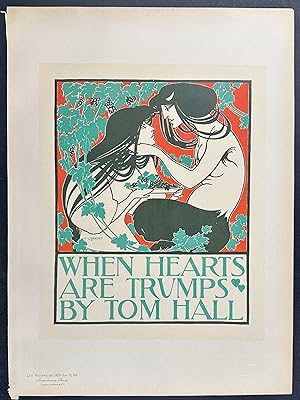
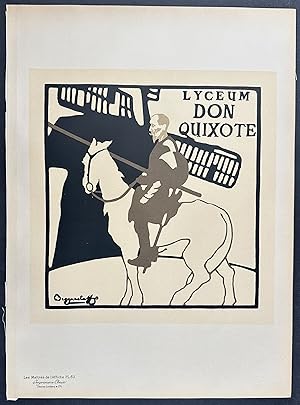
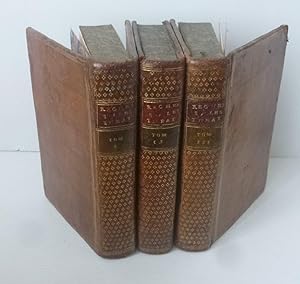
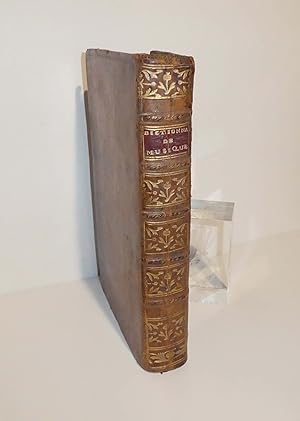
![Image du vendeur pour Vue perspective de la Salle de Spectacle de Bordeaux par M. Louis [ Gravure rehaussée en couleurs du Grand Théâtre de Bordeaux ] mis en vente par Librairie du Cardinal](https://pictures.abebooks.com/inventory/md/md31466521639.jpg)
